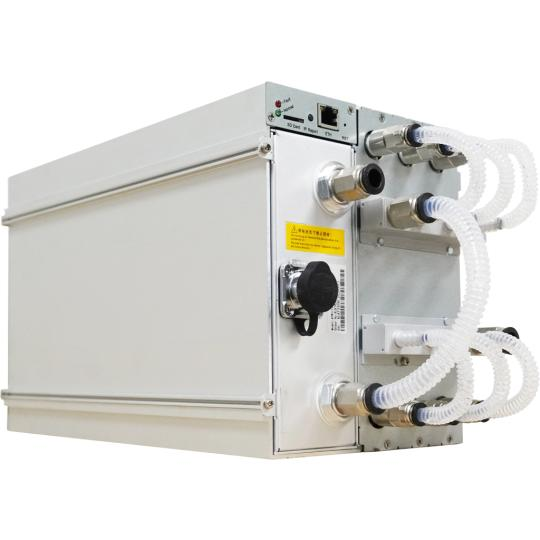What ls Bitcoin Mining?
2025年10月17日
Bitcoin mining secures the Bitcoin network by turning computational work (SHA-256 hashing) into consensus. Modern mining is dominated by purpose-built ASICs that trade upfront cost and electricity for SHA-256 throughput measured in terahashes per second (TH/s). This expanded guide explains the tech, shows how to evaluate machines realistically, highlights current market leaders, and gives practical checklists for anyone thinking about buying or operating miners.

Quick summary: the load-bearing facts
Bitmain’s Antminer S19 XP family is still a widely deployed, efficient air-cooled option (example spec: ~141 TH/s, ~3031.5 W, ~21.5 J/TH).
MicroBT’s WhatsMiner M56S and hydro/++ variants push much higher TH/s (200+ TH/s) at higher total watts and are aimed at operators with dense power & cooling.
Immersion and liquid cooling are growing in adoption for higher density and quieter operation in large farms; several operators and industry write-ups discuss their benefits and uptake.
Use live profitability calculators (WhatToMine, NiceHash, Minerstat, etc.) to model revenue with current BTC price and difficulty before buying.
A slightly deeper technical primer (but still practical)
Hashrate (TH/s): raw speed. Important, but meaningless by itself.
Power (W) & efficiency (J/TH): these drive your operational cost — the key long-term metric is Joules per terahash because electricity is a recurring expense.
Cooling & form factor: air-cooled racks are cheapest to deploy; hydro/higher-pressure liquid cooling and immersion let you stack more hashpower per square meter and reduce fan noise. Immersion systems often require investment in tanks, dielectric fluid, pumps, and maintenance.
Availability & warranty/support: big manufacturers have global supply chains and spare-part ecosystems; smaller vendors can be cheaper but harder to service.
Realistic energy cost example (step-by-step)
Let's calculate daily electricity cost for an Antminer S19 XP (Bitmain published spec): power ≈ 3,031.5 W (3.0315 kW).
Convert watts to kilowatts: 3,031.5 W ÷ 1000 = 3.0315 kW.
Multiply by 24 hours to get daily kWh: 3.0315 × 24 = 72.756 kWh/day.
Multiply by electricity price (example $0.05/kWh): 72.756 × 0.05 = $3.64/day.
So with $0.05/kWh a single S19 XP costs ≈ $3.64/day in electricity. To know profit you must compare that to the miner’s daily BTC revenue — which changes with BTC price and network difficulty (use WhatToMine or NiceHash).
Who’s making the “best” miners right now (practical view)
Bitmain (Antminer S19 XP and variants): strong ecosystem and proven reliability; a common baseline for farm planning.
MicroBT (WhatsMiner M56S / M56S++ / hydro variants): pushes high hashrates and rack density, including products positioned for hydro/liquid cooling. If your site can supply high power and cooling, these are attractive.
Lian Li: From a powerful factory in China, independently developed and produced, can be shipped quickly around the world
Note: specific SKUs change rapidly; always verify the exact model’s J/TH and wall power on the manufacturer or a reputable rig index before purchase.

Immersion & community impacts — what operators must consider
Immersion and liquid cooling are increasingly discussed because they reduce fan noise and raise heat-removal efficiency — attractive for both density and neighbor relations. Large operators have publicly described moves toward immersion to mitigate noise and thermal issues. However, immersion requires capital, different maintenance skills, and regulatory/compliance checks. Community pushback over noise and local grid stress has been notable in some U.S. towns, pushing operators and regulators to reassess siting and mitigation.
Buying & deployment checklist (practical, printable)
Electricity contract: confirm kWh price, demand charges, and whether your supply is single- or three-phase.
Power distribution: verify breakers, PDUs and redundancy.
Cooling plan: air vs. liquid vs. immersion — include cost of chillers, pumps, or dielectric fluid.
Space & rack density: plan for cable, airflow, and service access.
Firmware & pool setup: choose a mining pool and configure monitoring/alerts (uptime, temps, hash drops).
Warranty & spare parts: order replacements for PSUs and fans; verify cross-region warranties.
Regulatory check: local noise ordinances, electrical permitting, and grid interconnection rules.
Environmental, regulatory, and community considerations
Energy sourcing matters: miners on renewables or curtailed power can improve environmental optics and may access subsidies. Several regions and governments are evaluating incentives for low-impact mining methods.
Community impacts like noise have led to friction in some towns; immersion and quieter cooling help but don’t eliminate all concerns. Operators should engage early with neighbors and local regulators.
Tools & next steps (quick links to use now)
WhatToMine — model revenues by hash rate and power.
NiceHash Profitability — alternate calculator and marketplace.
Rig/ASIC index sites (HashrateIndex, MiningNow, ASICMinerValue) — compare models & current specs.
FAQ About Bitcoin Miners
FAQ 1: What are Bitcoin miners and how do they work?
Bitcoin miners are specialized computers, known as ASICs, that solve complex cryptographic puzzles to validate transactions on the Bitcoin blockchain. By contributing computing power, Bitcoin miners secure the network and earn rewards in Bitcoin, making mining a key part of how the Bitcoin system functions.
FAQ 2: What are the best Bitcoin miners to buy in 2025?
The best Bitcoin miners in 2025 include the Antminer S19 XP, WhatsMiner M56S, and newer liquid-cooled ASIC miners designed for high efficiency and stability. When choosing the best Bitcoin miner, compare hashrate, power consumption, and ROI to ensure long-term profitability.
FAQ 3: How profitable are Bitcoin miners today?
Bitcoin miners can still be profitable in 2025, but earnings depend on electricity costs, mining difficulty, and BTC price. The most efficient Bitcoin miners, such as the Antminer and WhatsMiner series, achieve higher ROI through better power efficiency (measured in joules per terahash).
Recommended news
LianLi welcomes visitors to Booth TB09b at iTherM 2025. discover advanced liquid cooling solutions for AI, HPC, and next-generation data centers.
Looking for a crypto mining container for sale? Compare crypto mining containers, cooling types, capacity, and real deployment tips. Find the best crypto mining containers for sale for mining farms in 2025.















